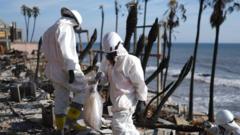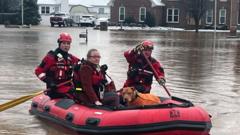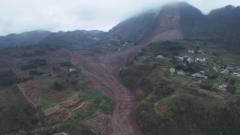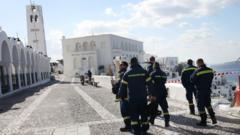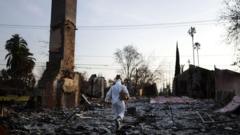Despite rising concerns over seismic activity, experts affirm that precise earthquake forecasting remains out of reach.
**Understanding the Complexities of Earthquake Predictions**

**Understanding the Complexities of Earthquake Predictions**
Exploring the reasons behind inaccurate earthquake predictions and the ongoing debate within the scientific community.
In October, social media influencer Brent Dmitruk proclaimed that a significant earthquake would soon strike near Eureka, California. Two months later, a magnitude 7.3 quake did indeed hit the region, gaining Mr. Dmitruk a considerable following among the anxious public. However, this incident brings to light a critical issue: experts assert that predicting earthquakes with any reliability is, in fact, impossible.
Acclaimed seismologist Lucy Jones, who previously worked with the US Geological Survey (USGS), emphasizes that millions of individuals residing on the western coast of North America live with the dread of an impending "big one." The urgency to understand earthquake patterns stimulates a tendency to simplify complex geological formations into easily digestible forecasts. "The human need to make a pattern in the face of danger is very strong," Jones explains, but she warns that these patterns lack genuine predictive power.
Worldwide, approximately 100,000 earthquakes are recorded annually, and regions like Eureka experience frequent tremors. Recent data shows over 700 earthquakes have occurred in the area within the past year alone. This particular coastal site is part of a dynamic region known for its tectonic activity—specifically where three plates converge, increasing the likelihood of quakes. While Dmitruk may have correctly foretold a quake in a volatile area, Jones notes that such predictions are often little more than luck.
History reveals that prediction attempts are often overly ambitious. The complexity of geological interactions makes forecasting a detailed seismic event nearly impossible. The USGS emphasizes that, while it can assess the probability of earthquakes occurring in regions over several years, pinpointing variables such as location, timing, and magnitude remains elusive. “It’s not within our reach to achieve this ability now or foreseeably in the near future,” they affirm.
The phenomena of seismic activity, however, have been studied, revealing particular areas experienced massive earthquakes on a regular basis due to historical geological events. For instance, the Cascadia subduction zone is known to undergo major slips every 300-500 years, while the San Andreas fault could also generate significant events every 200-300 years. Both regions are closely monitored for seismic activity.
However, self-proclaimed predictors, like Mr. Dmitruk, who lack scientific expertise, often mislead anxious communities. While he has made numerous predictions over time, they include vague timelines and lack the stringent criteria established by the USGS: a specific date, time, and magnitude. As a result, many of his predictions have yet to materialize.
Despite the unpredictability of earthquakes, experts assert that preparedness remains key. For this reason, initiatives like the Great ShakeOut exist, enabling citizens to rehearse safety measures such as Drop, Cover, and Hold On in the event of an earthquake. There’s also the ShakeAlert system, which provides near-instant warnings upon detecting seismic activity, allowing individuals valuable seconds to respond.
In the landscape of earthquake predictions, skepticism must prevail. While the desire for certainty amid natural disasters is understandable, the complex interplay of geological factors makes precise prediction unattainable. Awareness and preparedness, therefore, offer a practical approach for communities seeking to navigate the uncertainties of living in seismic zones.






